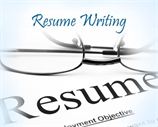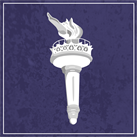What really makes a great resume for today’s job market?The use of a branding statement, a tag line or two, relevant keywords/key phrases, and a situation/action/results writing style can actually increase the return of your resume. Let’s review why each are increasingly important for job seekers competing in today’s highly competitive job market.
1. Branding Statement
Personal branding is hot – very hot! Once paralleled with top business professionals such as Bill Gates, Donald Trump, and let’s not forget Oprah, personal branding strategies are now applied to job seekers. Branding is not made up of one thing, but of many. According to Wikipedia.org, personal branding “is not limited to the body, clothing, appearance and knowledge contained within, leading to an indelible impression that is uniquely distinguishable.”
Can branding techniques be used for job search purposes? Absolutely. Start by using a branding statement within your resume. Typically a one or two-liner, a branding statement could be an umbrella statement relative to the broadness and depth of you.
To develop a branding statement, take your 15-second elevator pitch and rework it to include key points relevant to talent recruiters. For those who don’t have an elevator pitch, write a short paragraph (4-5 sentences) about your professional career and value. Then, boil the paragraph down to a couple of sentences. Lastly, fine-tune the statement until it contains the exact wording that helps sell you to the hiring community.
2. Using Tag Lines
If a branding statement as a book title, a tag line would be the subtitle.
Tag lines are terrific, enabling those who review your resume to immediately see your value… all from a mere skim. Oh sure, resume management systems are certainly ruling the roost when it comes to resumes these days, but real people are actually out there reviewing soft and hard copy resumes, so definitely write your resume for those pesky RMS systems, and don’t forget about the human beings, too.
Taking a variety of forms, tag lines can be a group of keywords or a sentence fragment. The first example tag line below (Award-Winning Designs – Community Project Lead – Travel Internationally) was perfect for this client. She was targeting a high-end, executive role for a major community development company with project interests on a national and international level. Certainly we could have included this information within the intro statement, or elsewhere, but a more strategic placement adds visual interest and introduces a bit more white space to attract readers’ eyes.
My favorite use of tag lines is to include a quick “content snapshot” where you would otherwise see blank space. For example, readers would learn this individual is a turnaround expert by simply reading the resume; but honestly, who reads an entire resume these days?
Tag lines are another way for readers to quickly learn more about you and what you have to offer, putting you one step closer to being called for an interview.
3. Keywords & Key Phrases
Want to know an insider’s secret to identifying ideal keywords and key phrases for your resume? Print those ideal job ads and get out a highlighter. Highlight job tasks, concentrating on nouns/actions. Then, cross-reference the highlighted keywords against your resume. Is there an important keyword (skill) missing from the resume? Does the resume need a bit more tweaking to accommodate more relevant keywords and key phrases? Sometimes a job description is filled with poppy-cosh, and by focusing primarily on those specific skills (keywords), you’re somewhat getting rid of the “content fat,” enabling you to see what’s ultimately important to the hiring company.
4. Situation/Action/Results (SAR) Writing Style
A SAR writing style introduces achievements into a resume, adding numbers and percentages to add visual breaks in text for readers’ eyes… it’s that simple. Hiring managers and recruiters love achievements within a resume because each represents an action and result on the part of the candidate.
Introduce more achievements into your resume by focusing on your specific job area, department, or the company as a whole. Think about situations you faced during your tenure, how you responded, and the results from each action. Did you increase sales? Save the company money? Cut dependency on a specific resource? If you weren’t in a lead/management role, maybe you assisted a team with achieving a sales goal or securing that million-dollar client.
Some actions seem small, but in the end, may have resulted in a big impact. For example:
Provided extensive team support during the development and integration of a new incentive program offered to the SE sales team; program added $3.2 million in new sales and was later introduced to other US-based territories.
______________________________________________________________
If you are worried about writing a résumé, or struggling with the task, you’re not alone! Are you looking to change fields or just give your résumé some more meat? Research suggests that your résumé has less than 20 seconds to make the right impression, so it must be eye-catching and easy to read. Click here to register!



